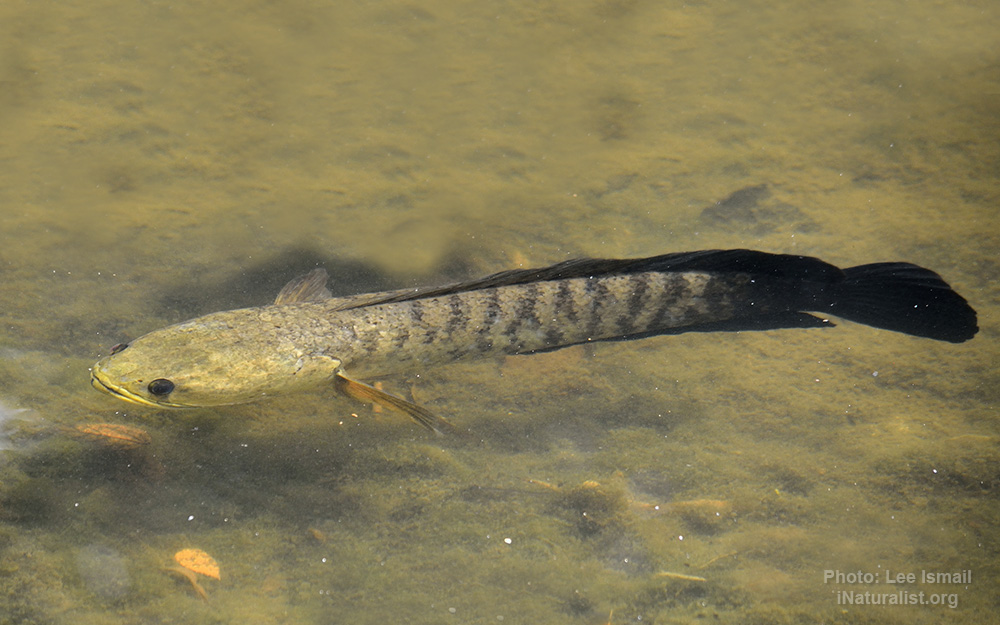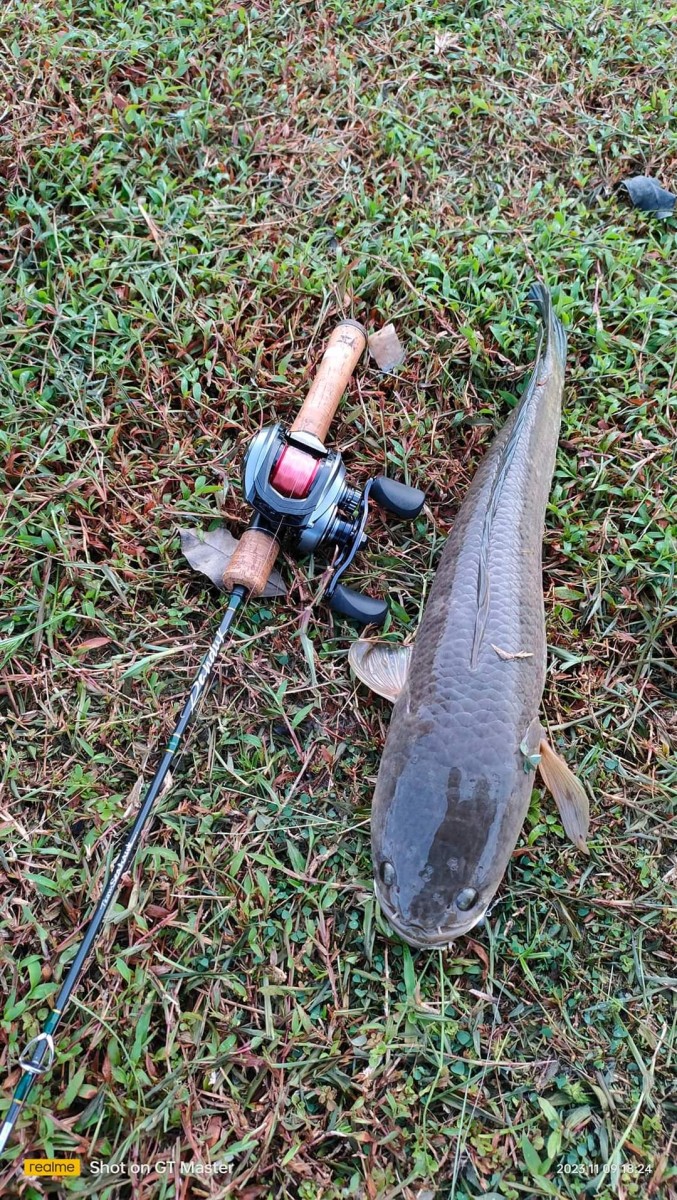Striped snakehead
(Channa striata)

Classification
General data
Channa striata, the striped snakehead, is a species of snakehead fish. It is also known as the common snakehead, chevron snakehead, or snakehead murrel and generally referred simply as mudfish. It is native to South and Southeast Asia, and has been introduced to some Pacific Islands. Reports from Madagascar and Hawaii are misidentifications of C. maculata.
It is a bony fish with endoskeleton ribcage, grows up to a meter in length, though because of fishing, this size is rarely found in the wild.
It has a widespread range covering southern China, Pakistan, most of India, southern Nepal, Bangladesh, Sri Lanka, and most of Southeast Asia. It has more recently been introduced to the outermost parts of Indonesia, the Philippines, and Mauritius. Reports beginning in the early 20th century that it was introduced into the wild in Hawaii, particularly the island of Oahu, as well as later reports from Madagascar, are the result of misidentifications of C. maculata. The only currently confirmed Hawaiian establishment of C. striata is on a commercial fish farm. Popular media and the United States Fish and Wildlife Service were perpetuating this apparent mistake as recently as 2002.
It is an important food fish in its entire native range, and is of considerable economic importance.
Adults are dark brown in colour with faint black bands visible across its entire body. Males and females both help to construct a nest out of water vegetation during breeding time. Eggs are guarded by both parents. Fry are reddish orange and are guarded by both parents until they turn greenish brown at around 5–6 cm.
It is common in freshwater plains, where it migrates from rivers and lakes into flooded fields. Subsequently, it returns to permanent water bodies in the dry season, where it survives by burrowing in the mud.
It preys on frogs, water bugs, and smaller fish, and it will attack anything moving when breeding.












